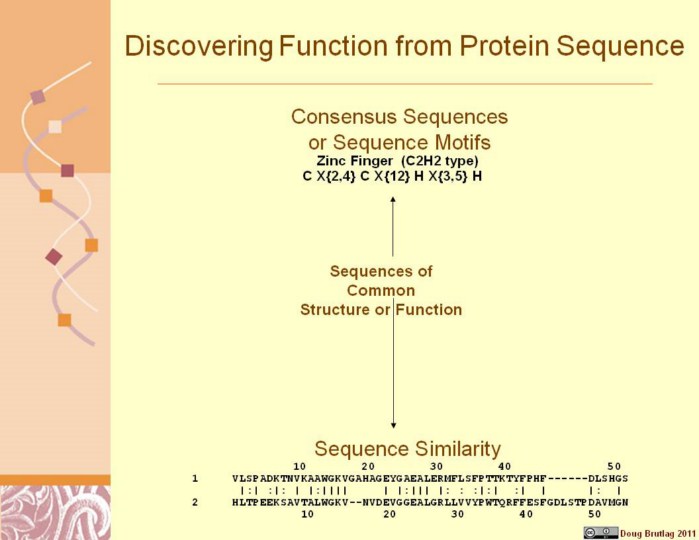| front |1 |2 |3 |4 |5 |6 |7 |8 |9 |10 |11 |12 |13 |14 |15 |16 |17 |18 |19 |20 |21 |22 |23 |24 |25 |26 |27 |28 |29 |30 |review |
 |
•This
slide illustrates several of the sequence representations to be
discussed at this meeting. There are several papers on novel methods
for discovering sequence motifs or consensus sequences. The primary
goal of the new work is to discover conserved properties of residue
rather than conserved residues themselves.
•Dynamic
programming methods can introduce more flexible patterns allowing
arbitrary mismatches and gaps.
•Weight
matrices, originally introduced by Roger Staden followed by the Blocks
of Steve Henikoff and the Profiles of Mike Gribsko and Templates of Tom
Blundell permit increasingly robust representations of motifs,
although often at the sacrifice of some precision or sensitivity. There
advantage is that they permit the representation and dynamic programming
of entire families of sequences rather than just a single one.
•Finally,
there are tutorials, papers and posters on Hidden Markov models of
proteins, a clear generalization of the profile concept appropriate for
the larger superfamilies.
These
methods themselves can be classified along several dimensions one of which
is shown on the next sli |